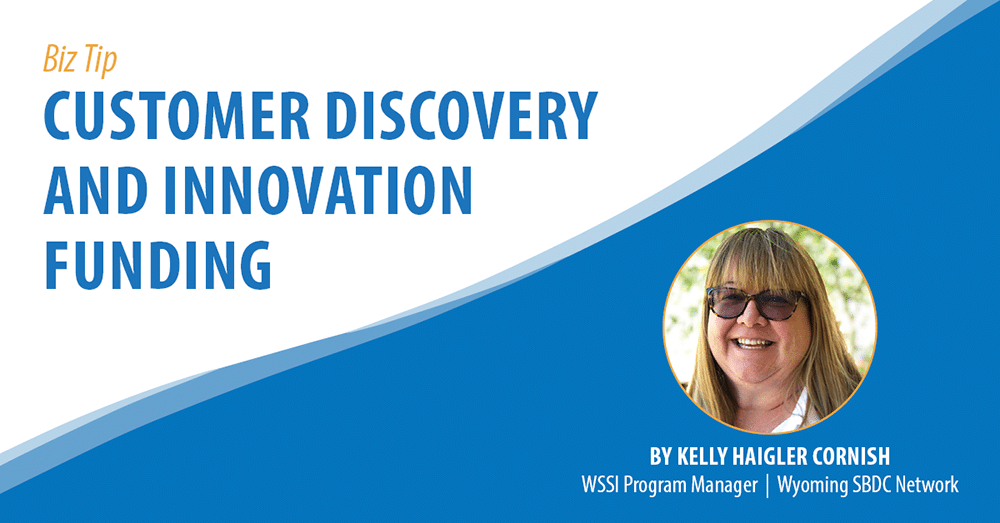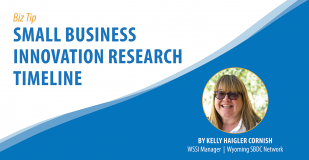Identifying your customers goes a long way in increasing a small businesses sales, but it can also play a major role in receiving funding from some sources. For small business pursuing Small Business Innovation Research (SBIR) and Small Business Technology Transfer (STTR) funding, knowing your potential customers validates the market potential — which federal agencies see as de-risking their investment in your idea. Those agencies don’t want to fund an SBIR or STTR project that won’t make it to commercialization.
Market Research and Customer Discovery
One way to show the market-pull or potential commercialization is to conduct market research and customer discovery. Advisors and innovation funding experts at the Wyoming Small Business Development Center (SBDC) Network can help you access secondary market research data from licensed, proprietary databases such as Frost & Sullivan. This information will help you get an overall picture of your potential market. Additionally, your local advisor can work with you to craft customer discovery questions that you will use when you get out of your lab or office and talk to potential users, customers and partners. These conversations will help you determine if you have identified the solution to a real problem or if you are creating a product for a problem that users don’t think exists.
Market research and customer discovery is important for any new business venture — this includes high-tech companies. In the SBIR and STTR world, federal agencies are looking to see if your small business understands the customers’ needs and if you are proposing solutions that really address the customers’ pain points.
If you think of the SBIR and STTR awards as investments in a small business by the federal government, then you can better appreciate the agency’s viewpoint. The reviewers assess the potential for the small business to succeed from the research and development phase (funded by SBIR and STTR funds) all the way to the market launch of a commercially viable product.
Types of Market Research
There are two types of market research you can do.
Secondary Market Research
Secondary market research is data that is collected and compiled by other entities. Some sources include government agencies, media sources and trade associations. Some of these sources are free while others are offered for a fee.
Examples of places to get free access to secondary market data the U.S. Census Bureau, your local college or university library and the Wyoming SBDC Network’s Market Research Center.
Secondary market research is easier and less costly to obtain and can provide a broad understanding of your market. However, it may not specifically address what you need to know.
Primary Market Research
The other type of market research is primary. That means you as the researcher collect the information directly from potential customers and users. With primary research, the information you collect is based on the needs of your organization. Furthermore, you get to design the questions and target the market segment for your unique product. You also own the data you collect.
Help is Available With Customer Discovery and Innovation Funding
To learn more about conducting research and customer discovery, consider registering for our March 12 webinar with Peter Scott, University of Wyoming’s Entrepreneur in Residence for the College of Engineering and Applied Sciences. This webinar, titled Market Research & Customer Discovery, will supply you with the information and tools you need to start on the road to customer discovery.
You can also learn more by signing up to meet with your local Wyoming SBDC Network advisor by visiting clicking here.
About the Author: Kelly has experience in technology transfer, intellectual property, data rights, indirect cost calculations, federal SBIR and STTR grants and contracts, and other small business topics related to innovation and research. Kelly loves working with existing small businesses to help them discover their innovative edge and working with startups that are taking the next big thing to market.






